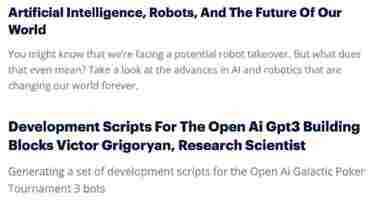DuckDuckGo’s new Email Protection service sounds helpful but limited
DuckDuckGo has unveiled a new email forwarding service that strips trackers from your messages.

To get the Email Protection tool, you have to sign up for a free @duckom address. The tool will then remove hidden trackers from emails sent to this address, before forwarding them to your regular inbox.
You can currently access the beta version by joining the private waiting list. To sign-up, open the DuckDuckGo app for iOS or Android, then navigate through Settings, Beta Features, and finally Email Protection, to find the option to join the waiting list.
DuckDuckGo’s new service removes trackers from emails. It sounds handy, but The Verge has pointed out a pretty glaring defect: while you can respond to emails received on a @duckom address, you can’t use it to send an initial email.
Up front: A 2017 study found that around 70% of emails contain trackers that can detect when you opened a message, where you were at that time, and which device you were using.
This data can be used to target you with ads and influence what you see online.
DuckDuckGo’s new tool could remove the sneaky trackers without requiring a move to another email service. The company also promises to never save your messages.
Quick take: DuckDuckGo is best-known for its privacy-centric search engine. Adding a feature that removes email trackers feels like a fitting move.
The tool is similar to Apple’s new anti-tracking feature , but DuckDuckGo’s alternative has the advantage of working across platforms.
The lack of a send feature may disappoint some users, but the service could still improve your email privacy .
Greetings Humanoids! Did you know we have a newsletter all about AI? You can subscribe to it right here .
This GPT-3-powered tool generates new ideas for your terrible blog
Even the greatest writers sometimes struggle to come up with new ideas. At least, that’s what I’ve heard. Luckily for them, a new AI Blog Idea Generator could sprinkle some inspiration onto their empty pages.

Just enter some keywords into the search bar and the system will analyze Google‘s top-performing content on the subject. It then runs the data through OpenAI‘s vaunted GPT-3 text generator to produce a new idea.
The tool is targeted at content marketers on the hunt for blog posts that will rank highly on Google search. But I tested whether it could also help this humble hack to overcome his writer‘s block.
Some of its creations were relevant but clichéd, while others were largely gibberish.


The tool’s creator Nikhil Aitharaju acknowledges that not every idea will be a winner:
Alas, he didn’t invent the system solely out of the goodness of his heart. Users only get a limited number of free ideas before they have to upgrade to a paid subscription.
That’ll probably put the tool out of reach for many journalists ( *sniff* ), but content marketers might be more willing to dig into their pockets.
Just don’t expect the ideas to be anything too original. But at least you won’t have to think them up yourself.
Microsoft unveils efforts to make AI more accessible to people with disabilities
Microsoft has announced a series of new efforts to make AI systems more inclusive of people with disabilities.

The initiatives aim to combat the so-called “data desert” that’s left machine learning algorithms without enough relevant training data to be effective for people with conditions such as ALS.
One project, called Object Recognition for Blind Image Training (ORBIT), seeks to change this by building a new public dataset of videos submitted by people who are blind or have low vision. The data will be used to develop algorithms for smartphone cameras that recognize important personal objects, such as someone’s cell phone or face mask.
Microsoft is also collaborating with Team Gleason , an organization that supports people living with Amyotrophic Lateral Sclerosis (ALS), to create an open dataset of facial imagery of people with the neurodegenerative disease. This will be used to make computer vision and machine learning algorithm better at recognizing people with ALS symptoms.
A third project led by VizWiz is developing a public dataset to train, validate, and test image captioning algorithms. They’ll be used to provide data about things that people with low vision photograph, such as how much of an over-the-counter medicine they should take.
The team is also developing algorithms that instantly recognize when an image submitted is unclear and suggest how to retake it.
“Often it’s not obvious what is meaningful to people, and that’s why it’s so important not just to design for — but design these technologies with — people who are in the blind and low vision community,” said Danna Gurari, who developed the VizWiz dataset.
These initiatives address a few of the many ways in which mainstream algorithms don’t work well for people with disabilities because they aren’t trained on inclusive data.
These oversights could potentially cause a self-driving car to not identify someone in a wheelchair as an object to avoid, or lead a predictive hiring system to lower the rank of job candidates with disabilities as they differ from the product’s idea of what a “successful” employee sounds and looks like.
Building more inclusive and publically-available datasets will help reduce these risks and improve technologies designed to support people with disabilities.